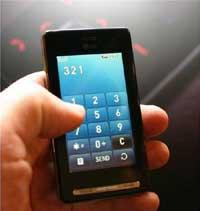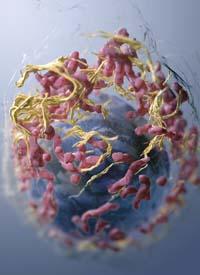WHO has included mobiles in the classification of carcinogenic agents at the average level. Neither more nor less.
2011/06/01 Galarraga Aiestaran, Ana - Elhuyar Zientzia
The decision has had great repercussion, since in these electromagnetic fields are based some tools that allow wireless communication, including mobile phones. And precisely, WHO has mentioned an investigation with mobiles, among the reasons that have led to the decision. In this study, it is concluded that the risk of developing brain cancer, glioma, increases by 40% when mobile use exceeds 30 minutes daily for 10 years.

However, WHO itself has determined that this research is epidemiological. That is, it does not show that there is a causal effect, but there is a statistical relationship between those who use mobile phones and those who have this type of cancer. Therefore, it indicates that deeper studies will be needed to demonstrate the relationship and, if confirmed, to explain the mechanism of cancer.
Meanwhile, the WHO has chosen to include electromagnetic waves that use mobile phones in the classification of carcinogenic agents at level 2B (the classification has 5 levels, from non-cancerous agents to proven cancer agents and level 2B is in half). According to this, "the agent may be a carcinogenic agent for people."
At the same level as the electromagnetic field of mobile phones are other highly used topics such as talc powders, coffee (related to bladder cancer, although also in the same report it is mentioned that coffee is protective in colon cancers) and some polymeric and metallic surgical implants such as cobalt or nickel.
Faced with this possible risk, the director of the International Cancer Research Agency of the WHO has advised the adoption of practical measures to reduce exposure to mobile phones through text messages or hands-free devices.
However, the press release notes that the conclusions of the INTERPHONE study will be published shortly. This study is of reference since it includes hundreds of long-term studies on the impact of mobile phones. Some of these studies have already been reported, but not all have been unified, nor have global conclusions drawn. Experts expect the results to be definitive. On July 1, an advance will be published in the specialized magazine The Lancet Oncology.
Interview in Faktoria de Euskadi Irratia.

Gai honi buruzko eduki gehiago
Elhuyarrek garatutako teknologia






